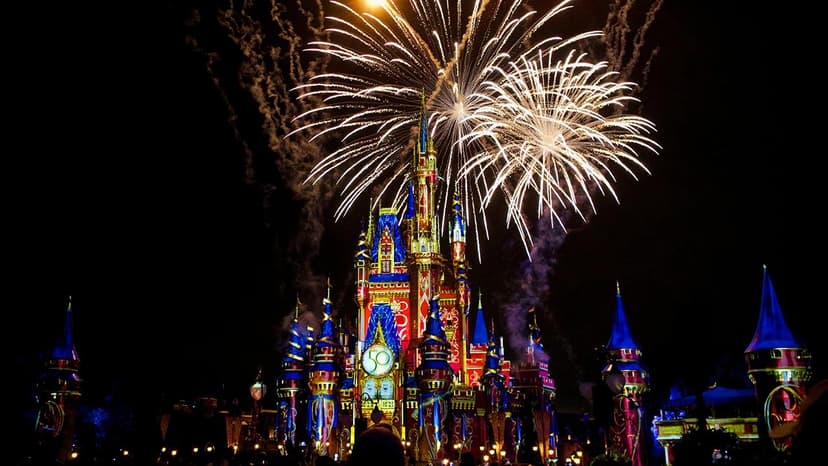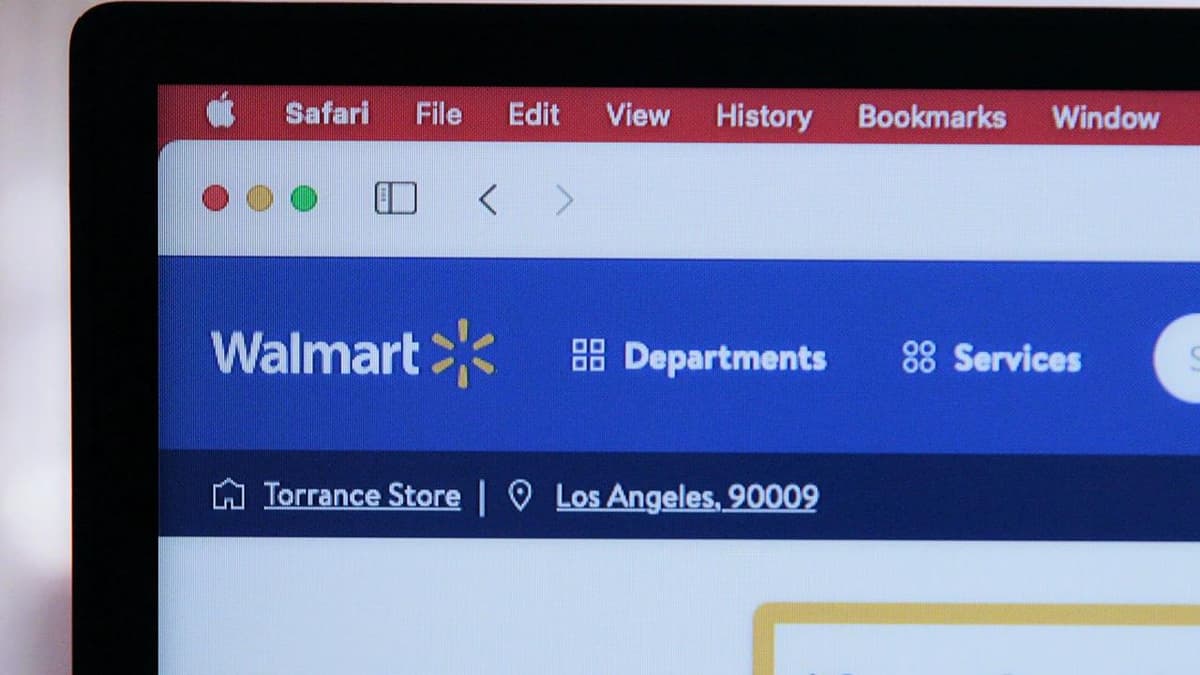Exploring Public Transport Options in Hong Kong
Hong Kong, famous for its skyscrapers and bustling market streets, also boasts one of the most efficient public transportation systems in the world. Whether you're a tourist eager to explore the dazzling cityscape, or a local commuting to work, navigating the city can be remarkably stress-free if you know your options. Let’s take a little journey through the vibrant public transport options in Hong Kong, which are not only wallet-friendly but also convenient.
1. MTR – The Backbone of Urban Travel
At the heart of Hong Kong’s public transport network is the Mass Transit Railway, commonly referred to as the MTR. This expansive railway network includes 11 lines that connect all major districts in the territory, including stops at key attractions and business hubs. Each station is clearly marked with English and Chinese signage, making it exceptionally tourist-friendly.
Riding the MTR is not only speed-efficient; it's also cost-effective. You can purchase a single-journey ticket or an Octopus card — a rechargeable contactless stored value card which can be used on most forms of public transport, as well as at retail outlets. For more info, visit MTR.
2. Buses and Mini-Buses – Flexible Road Companions
Hong Kong’s buses and mini-buses fill in any gaps left by the MTR. They are ubiquitous and incredibly diverse in their routes. Double-decker buses, a nod to the British heritage of Hong Kong, offer a scenic view from the upper deck, which can be quite a delightful experience, especially when traveling across the towering skyscrapers of Central or the scenic routes of Tai Tam Tuk.
Mini-buses come in two types: green and red. Green mini-buses have fixed routes and fares, whereas red mini-buses operate more freely, with the flexibility to pick up and drop off anywhere along the route (except in restricted areas), and fares can vary depending on the distance.
The bus networks in Hong Kong are operated by different companies, including KMB, Citybus, and New World First Bus. Schedules and routes are conveniently available online:
3. Trams – The Charming Option
One cannot mention public transport in Hong Kong without paying homage to the Ding Ding Tram, officially known as Hong Kong Tramways. These trams have been operational since the 1900s, running from East to West of the Hong Kong Island. They aren’t the fastest mode of transportation, but what they lack in speed, they make up for in charm and affordability.
Trams are ideally suited for those who aren’t rushing and prefer to enjoy a more scenic and immersive view of Hong Kong’s bustling island life. Plus, they are one of the most environmentally friendly ways to navigate the city. Peak Tram, specifically for travel to Victoria Peak, provides breathtaking views of the city and is a must-try experience.
For routes and fares, visit Hong Kong Tramways.
4. Ferries – A Scenic Route to Remember
Given that Hong Kong is a collection of islands, some destinations are best reached by boat. The Star Ferry, its service operational since the late 1800s, runs across Victoria Harbour, linking Hong Kong Island with Kowloon. It's an incredibly popular transport, thanks to the stunning cityscapes it offers — particularly magical during the evening light show.
Aside from the Star Ferry, there are services to outlying islands like Lamma, Cheung Chau, and Lantau, which are not only practical but also offer a delightful escape from the city hustle. Ferries are operated by different companies, so it's best to check schedules on their respective websites:
5. Taxis – The Ever-Ready Option
While more costly compared to other public transports, taxis in Hong Kong are plentiful, metered, and available 24/7. They come in different colors signifying different operating areas: red for urban areas, green for the New Territories, and blue for Lantau Island. You can flag down a taxi on the street, except in restricted areas, or find them at designated taxi stands.
Hong Kong’s public transport is diverse, efficient, and designed to cater to just about every need. Whether you prefer the rapid transit of the MTR, the scenic views from a double-decker bus or the tram, or the soothing sail of a ferry, Hong Kong makes it wonderfully simple. As you journey through this dynamic metropolis, each mode of transport offers a unique perspective of the city’s charm. Enjoy the ride!
Exploring the Unique Tastes of Hong Kong Cuisine
Hong Kong, a bustling metropolis known for its vibrant culture and rich history, is also a paradise for food lovers. From sizzling street snacks to gourmet dishes, the city offers a wide array of flavors that embody the essence of both traditional Chinese cooking and colonial culinary influences. As you wander through the neon-lit streets, you'll find that each dish tells a story of cultural fusion and culinary evolution. In this article, we introduce you to some must-try local Hong Kong dishes that will not only satisfy your taste buds but also give you a deeper appreciation of the city's unique culture.
Best Dim Sum in Hong Kong: A Bite-Sized Culinary Delight
No visit to Hong Kong is complete without experiencing the joy of dim sum. This traditional Cantonese meal consists of small plates of savory and sweet dishes, typically served with tea. Popular options include:
- Siu Mai (Shumai): These are open-topped dumplings filled with pork and shrimp, often topped with an orange dot of crab roe.
- Har Gau (Shrimp Dumplings): Steamed dumplings with a translucent wrapper filled with juicy shrimp.
- Char Siu Bao (BBQ Pork Buns): Fluffy buns filled with sweet and savory barbecued pork.
These bite-sized delights are perfect for sharing and are a staple of any local culinary adventure.
Congee: Comfort in a Bowl
Congee, a type of rice porridge, is a comfort food enjoyed by many Hongkongers, especially during breakfast or on a rainy day. It is often garnished with ingredients like lean pork, century eggs, and scallions, providing a warm, comforting meal that is both simple and nourishing.
Roast Meats: A Flavorful Feast
Hong Kong is famed for its roast meats, which include:
- Roast Goose: Known for its crispy skin and tender meat, often served with plum sauce.
- Char Siu (Roast Pork): This dish features seasoned boneless pork roasted to a caramelized perfection.
- Siu Yuk (Crispy Pork Belly): Pork belly with perfectly crispy skin and tender meat, seasoned with spices.
These meats are typically served with rice or noodles and are a must-try for any meat lover visiting the city.
Fish Balls: The Street Food Staple
Fish balls are a popular street snack in Hong Kong. These are made from fish meat that has been pounded, shaped into balls, and then cooked. They can be found skewered on sticks and served either fried or boiled in a broth. The fried version is crispy and often comes with a spicy curry sauce, making it a flavorful, satisfying snack.
Egg Tarts: The Sweet Treat
Egg tarts are a beloved dessert in Hong Kong, showcasing the influence of British colonial rule. They feature a flaky pastry crust filled with a smooth, sweet egg custard. The top of the custard is often slightly caramelized, adding a delightful contrast to the creamy filling. These tarts are best enjoyed fresh from the oven, when they are particularly heavenly.
Wonton Noodles: A Savory Classic
An iconic dish, wonton noodles consist of thin egg noodles served in a savory broth with shrimp or pork wontons. The wontons are delicately wrapped and filled with seasoned minced meat and whole shrimps. Garnished with leafy vegetables, this dish is both flavorful and fulfilling.
Milk Tea: A Local Beverage Favorite
Hong Kong-style milk tea is a local staple. This rich and creamy beverage is made from black tea and condensed or evaporated milk, delivering a strong, smooth flavor. It's enjoyed any time of the day and is the perfect complement to any Hong Kong meal.
Clay Pot Rice: A Comforting Delight
Clay pot rice is a winter favorite, involving rice cooked in a clay pot with various ingredients like chicken, Chinese sausages, and mushrooms. The ingredients infuse the rice with their juices as they cook, creating a comforting and aromatic dish. The best part is the crispy rice crust that forms at the bottom of the pot, which is highly coveted for its texture and flavor.
Mango Pudding: A Tropical Dessert
Ending our list is the mango pudding, a popular dessert that reflects Hong Kong's love for mangoes. This smooth, jiggly pudding is made from mangoes, gelatin, and cream, offering a refreshing finish to any meal.
Hong Kong's culinary scene is as diverse as its culture, offering a plethora of dishes that highlight the region's history and flavor preferences. Whether you're indulging in some steaming dim sum, savoring the crispy skin of roast meats, or cooling down with a sweet mango pudding, each dish provides a unique taste experience that’s integral to the spirit of Hong Kong. Make sure to try these dishes to truly embrace and enjoy the local food culture during your visit.
Top 10 Best Shopping Destinations in Hong Kong
Hong Kong is a vibrant city known for its skyscraper-studded skyline, deep natural harbor, and impressive culinary scene. Yet, it's the city's shopping options that truly offer a unique blend of East and West that draw visitors and locals alike. From bustling street markets to luxurious shopping malls, Hong Kong is a shopper’s paradise. Here’s a round-up of the top 10 shopping places in this dazzling city.
1. Causeway Bay
Regarded as one of the premier shopping districts in Hong Kong, Causeway Bay is buzzing with energy. It houses a range of stores from budget to luxury, along with eateries and entertainment options. The highlight is undoubtedly Times Square, a large shopping mall known for its vast array of shops. Getting there is easy via the MTR, just alight at Causeway Bay Station.
2. Tsim Sha Tsui
Located in Kowloon, Tsim Sha Tsui is a shopping and entertainment hub. It has several high-end boutiques, department stores, and international brands, particularly on Nathan Road and in Harbour City, one of Hong Kong’s largest shopping complexes. To visit, take the MTR to Tsim Sha Tsui Station.
3. Central
The Central district is not just the financial heart of Hong Kong but also a shopping mecca. It features luxury brand stores, chic boutiques, and traditional shops. The IFC Mall and the adjacent Landmark Mall cater to every taste and budget. Central is directly accessible by MTR (Central Station) and is a great spot to combine sightseeing with shopping.
4. Mong Kok
Famous for its buzzing atmosphere and street markets, Mong Kok offers an authentic local shopping experience. Ladies' Market on Tung Choi Street is particularly popular for bargain clothing and accessories, while Sneaker Street (Fa Yuen Street) is ideal for sports shoes enthusiasts. Mong Kok can be easily reached via the MTR (Mong Kok Station).
5. Stanley Market
Located on the south side of Hong Kong Island, Stanley Market is known for its relaxed vibe and is popular with both tourists and locals. It specializes in silk garments, traditional Chinese crafts, and souvenirs. Buses from Central (like the 6, 6A, 6X, 66, 260) and Exchange Square bus terminus service Stanley, making it accessible despite its distance from the city center.
6. Temple Street Night Market
Experience the nightlife while shopping at Temple Street Night Market in Kowloon. Known for its lively atmosphere, it’s great for inexpensive goods such as trinkets, electronics, and watches. It’s also an excellent spot to try street food. The nearest MTR station is Jordan, from which it’s a short walk to the market.
7. Pacific Place
Another premier shopping spot in Admiralty, near Central, is Pacific Place. This upscale mall boasts more than 200 stores, including major international brands and a range of dining options. It’s directly accessible via the Admiralty MTR station and is well-connected to surrounding hotels and commercial buildings.
8. Citygate Outlets
For those looking for designer brands at discounted prices, Citygate Outlets in Tung Chung is the place to go. It's next to Ngong Ping 360 cable car terminal, making it a good stop either before or after a trip to see the Big Buddha. Reach it by taking the MTR to Tung Chung Station.
9. PMQ
Once the Police Married Quarters, this historic site has been transformed into a creative hub and shopping destination in Central. PMQ hosts designer workshops, studios and sells unique, handcrafted products not found elsewhere. It’s within walking distance from the Sheung Wan MTR Station and is a cultural experience as much as a shopping one.
10. The Lanes
Central’s Li Yuen Street East and West, known collectively as The Lanes, are crammed with small stalls selling an impressive variety of goods at reasonable prices. They’re great for finding clothing, accessories, and household items. These lanes are easily navigable on foot from Central Station.
These diverse shopping destinations reflect the rich tapestry of Hong Kong’s retail scene. Whether you're looking for high-end fashion, street market bargains, or something uniquely Hong Kong, these top spots are sure to provide an exciting and fulfilling shopping experience.
Getting Around
Hong Kong's efficient MTR subway system is the best way to get around the city. Stations are conveniently located near most shopping destinations, making it both easy and affordable to hop from one spot to another. Remember to pick up an Octopus card for easy transit payment.
So grab your comfortable shoes and prepare for a shopping adventure in the bustling metropolis of Hong Kong! Your perfect purchase awaits you around every corner.
Top 10 Must-Try Restaurants in Kowloon
Kowloon, a bustling hub in Hong Kong, is not only famous for its neon-lit streets and vibrant markets but also for its diverse and delicious food scene. Whether you are a tourist or a local food enthusiast, Kowloon offers a variety of culinary delights that cater to every taste and budget. Here is a guide to the top 10 restaurants in Kowloon where your taste buds are sure to embark on a memorable journey.
1. Tim Ho Wan
Famed for being one of the most affordable Michelin-starred restaurants in the world, Tim Ho Wan is a must-visit for dim sum lovers. Their signature Baked Bun with BBQ Pork is the perfect blend of sweet and savory, and its crispy texture outside with tender meat inside will leave you wanting more. Expect a queue, but the wait is absolutely worth it.
Location: Shop 72, G/F, Olympian City 2, 18 Hoi Ting Road, Tai Kok Tsui, Kowloon
Website: Tim Ho Wan
2. Mido Cafe
Step into the past at Mido Cafe, a vintage eatery adorned with tiled floors and retro furnishings. This café offers a glimpse into Hong Kong’s yesteryears, serving traditional Hong Kong-style dishes and drinks. Do not miss their Baked Pork Chop Rice and the quintessential Hong Kong-style Milk Tea.
Location: 63 Temple Street, Yau Ma Tei, Kowloon
3. Nathan Congee and Noodle
For those chilly Kowloon nights, Nathan Congee and Noodle is a comforting spot that serves up steamy bowls of congee and heartwarming noodles. A local favorite is the Fish Belly Congee, which is creamy and rich, perfect for soaking up the flavors of the accompanying ginger and scallions.
Location: 11 Saigon Street, Yau Ma Tei, Kowloon
4. Australia Dairy Company
Despite its name, Australia Dairy Company is a cornerstone of local Hong Kong cuisine, specializing in breakfast and brunch items. The scrambled eggs here are legendary—silky, buttery, and perfectly cooked every single time. The fast-paced yet friendly service underscores an authentic Hong Kong diner experience.
Location: 47 Parkes Street, Jordan, Kowloon
Website: Australia Dairy Company
5. Temple Street Night Market Food Stalls
For an immersive experience, the food stalls at Temple Street Night Market offer a variety of street food that is boldly flavored and tantalizing. From succulent squid to spicy crab, each stall has its charm. Eating here is not just about food; it’s about enjoying the lively atmosphere and watching the world go by.
Location: Temple Street, Yau Ma Tei, Kowloon
6. One Dim Sum
A smaller, often less crowded alternative to Tim Ho Wan, One Dim Sum serves incredibly fresh and tasty dim sum at very reasonable prices. Their Har Gow (shrimp dumplings) and Cheung Fun (rice noodle rolls) are standout dishes that epitomize the craftsmanship of traditional Cantonese dim sum.
Location: Shop 1 & 2, G/F, Kenwood Mansion, 15 Playing Field Road, Prince Edward, Kowloon
7. Wing Kee Noodle
Wing Kee Noodle offers some of the best noodles in Kowloon. Their Soy Sauce Braised Noodles are a simple yet delightful dish, perfectly al dente with a robust sauce that clings to every strand. The noodles are usually served with a side of tender beef or pork, making for a fulfilling meal.
Location: 27A Sugar Street, Causeway Bay, Kowloon
8. Kam Wah Café
Kam Wah Café is famous for its Pineapple Buns, a classic Hong Kong pastry that combines a sweet crusty top with a soft, pillowy bread underneath. Pair it with a Hong Kong-style iced coffee for the ultimate afternoon treat. The café also serves various sandwiches and traditional baked goods.
Location: 47 Bute Street, Prince Edward, Kowloon
Website: Kam Wah Café
9. Lei Garden
Offering a more upscale dining experience, Lei Garden is renowned for its exquisite Cantonese cuisine, including superbly prepared seafood and dim sum. Their Peking Duck is a must-try, roasted to perfection with crispy skin and succulent meat. The ambiance and service match the high quality of the food.
Location: Shop 3008, 3/F, International Finance Centre, Central, Kowloon
Website: Lei Garden
10. Din Tai Fung
Although it originated from Taiwan, Din Tai Fung’s Kowloon outpost offers the same high standards with its world-renowned xiao long bao (soup dumplings). Each delicate dumpling is a burst of rich broth and tender meat encased in thinly rolled dough, showing off the precision of their well-trained chefs.
Location: Shop 306, 3/F, Silvercord, 30 Canton Road, Tsim Sha Tsui, Kowloon
Website: Din Tai Fung
Each of these restaurants captures a different facet of Kowloon’s culinary landscape, from traditional street food fares to sophisticated gourmet dishes. On your next visit to Kowloon, include these eateries in your itinerary to experience the true essence of local dining in Hong Kong. Whether searching for a quick bite or a leisurely meal, the vibrant culinary scene in Kowloon will surely satisfy your cravings and leave you with lasting memories.
Exploring Expat Communities in Hong Kong
Hong Kong, known for its stunning skyline and vibrant lifestyle, is also a melting pot of cultures, making it a welcoming city for expatriates from around the globe. Whether you are here for work, study, or simply to embrace a new adventure, finding a community can make your experience much more enriching and enjoyable. Fortunately, Hong Kong boasts a plethora of expat communities and social clubs where new arrivals can find familiarity, friendship, and support. In this article, we’ll explore some of the most active expat communities and how you can join them.
1. Cultural and National Associations
Many countries have their own dedicated associations in Hong Kong, helping nationals stay connected with their roots while embracing the local culture. These associations often organize events such as national day celebrations, cultural festivals, and casual get-togethers. Some notable examples include:
-
The American Club Hong Kong: Offering a variety of facilities and activities, this club is a hub for American expats. More details can be found at their website American Club HK.
-
The British Chamber of Commerce in Hong Kong: Although more business-focused, the Chamber organizes multiple social events where British expats can mingle. Visit BritCham for more information.
-
The German Swiss International School Alumni Association: This platform serves as a great place for German-speaking expatriates. More information is available at GSIS Alumni.
2. Sports and Recreation Clubs
For those who love staying active, Hong Kong offers numerous sports and recreation clubs where expats can join teams or enjoy recreational activities while meeting new people. Here are a few options:
-
Hong Kong Football Club: It's not just about football; this club offers rugby, hockey, and more. Great for families and single expats alike. Explore more on their website HKFC.
-
Lantau Boat Club: Perfect for those who enjoy water sports like rowing or dragon boating. Their community is very welcoming to new members. Check their activities at Lantau Boat Club.
3. Business and Professional Networks
For the career-oriented, there are many networks and business groups where one can connect with professionals from various industries. These clubs offer networking opportunities, workshops, and seminars which can be key to professional growth.
-
Hong Kong General Chamber of Commerce: With a diverse community, HKGCC hosts multiple events where business persons can meet and share ideas. More information is available on their official page HK Chamber.
-
French Chamber of Commerce: Whether you are French or just interested in Franco-Hong Kong business relations, this chamber offers a lively community. Visit their site for more French Chamber.
4. Social and Hobby Clubs
If your interests are more eclectic or specific, chances are there is a club in Hong Kong for it. From photography to book clubs, and cooking classes to language exchange meetups, the options are nearly limitless.
-
Hong Kong Photography Club: For photography enthusiasts looking to improve their skills and explore Hong Kong’s picturesque landscapes with a group. Find them on Facebook or at local community boards.
-
The Culinary Institute of Hong Kong: Offers workshops for cooking various cuisines. It's a tasty way to meet people with a shared interest in food.
5. Online Expat Forums and Groups
In today’s digital age, online communities are just as impactful. Before even arriving in Hong Kong, you can start connecting with fellow expats.
-
GeoExpat and AsiaXpat are two of the most popular online forums where expats post advice, advertisements, and job postings. Check out GeoExpat and AsiaXpat.
-
Meetup: The website Meetup offers a variety of groups for diverse interests and activities around Hong Kong. It's a great tool to use for both social and professional networking.
Tips for Getting Involved
-
Be Proactive: Attend events, introduce yourself, and don't be shy to participate in discussions or activities.
-
Stay Open-Minded: Embracing different cultures and new experiences is key to enjoying Hong Kong’s international environment.
-
Keep Consistent: Regular attendance at meetings or events helps in building stronger relationships within the community.
Living in Hong Kong as an expat can be one of the most exciting and enriching experiences of your life. With such a large and diverse expat population, the number of clubs and communities available makes it easy to find a circle where you can feel at home. So get out there, join a club that sparks your interest, and start making lasting connections in the city that truly never sleeps. This vibrant, bustling metropolis is waiting to be your new home away from home.
8 Best Weekend Leisure in Hong Kong
Hong Kong, a vibrant city filled with skyscrapers and traditional markets, is also a treasure trove of weekend activities and destinations that cater to every type of leisure seeker. From serene nature escapes to bustling market streets, Hong Kong offers a diverse range of activities that promise to rejuvenate anyone looking to unwind from the weekly grind. Here are some of the most popular leisure activities and places to visit during weekends in this dynamic city.
1. Hiking the Dragon's Back
For those who enjoy a blend of outdoor activity and stunning vistas, hiking the Dragon’s Back trail is a must. Voted as one of the best urban hikes in Asia, this trail offers breathtaking views of Shek O, Tai Long Wan, Stanley, and more. It's a relatively easy hike that is well-marked and about 8.5 kilometers long, making it a perfect morning activity before the day gets too hot. The reward at the end of the hike is a panoramic view of the South China Sea, with opportunities to relax at the beautiful beaches nearby.
2. Exploring Hong Kong Park
Located in the heart of the city, Hong Kong Park is a picturesque oasis amidst the urban landscape. The park features an aviary, a conservatory, and plenty of lush green spaces ideal for picnicking or a leisurely stroll. The Edward Youde Aviary is home to over 600 birds, making it an exciting place for families and bird watchers. The park is also an excellent spot for photography with its waterfalls, ponds, and a lookout tower that provides a unique view of the surrounding skyscrapers.
3. Visiting The Peak
For stunning cityscapes, The Peak, or Victoria Peak, is one of Hong Kong's most iconic attractions. The Peak Tram, which is an experience in itself, takes you up to the highest point on Hong Kong Island, offering spectacular views of the city and its harbors. Once at the top, you can enjoy various dining and shopping options, or simply soak in the views from the Sky Terrace 428, the highest viewing platform in Hong Kong.
Find out more about the Peak Tram here.
4. Relaxing at Repulse Bay
Repulse Bay is the ideal destination for beach lovers. Known for its crescent-shaped stretch of sand and clear waters, it is a popular spot for swimming, sunbathing, and water sports. The area also boasts some of the most luxurious residential properties in Hong Kong. There are plenty of restaurants lining the beach, offering delicious refreshments and meals with a view. The Repulse Bay area has a relaxed vibe, making it perfect for a leisurely day by the sea.
5. Shopping at the Temple Street Night Market
To experience local culture, the Temple Street Night Market offers an exciting atmosphere of bustling energy. Located in Kowloon, the market comes alive at dusk with vendors selling everything from trinkets and tea sets to traditional Chinese medicine and street food. It's a place to haggle over prices and enjoy some tasty treats, such as claypot rice and oyster omelets. The market is also a good place to hear Cantonese opera singers and fortune tellers, adding to its vibrant character.
6. Discovering Lantau Island
Lantau Island provides a mix of cultural and natural attractions. You can visit the famous Big Buddha and the Po Lin Monastery, offering insights into Buddhist architecture and religious heritage. The Ngong Ping 360 cable car provides an exhilarating ride to these sites, with stunning aerial views of the island. Additionally, Lantau features some beautiful hiking trails and sandy beaches. Tai O, a traditional fishing village on the island, offers a glimpse into the region's old way of life with stilt houses and sunset boat rides.
7. Enjoying a Day at Ocean Park
Ocean Park is a favorite among families and thrill-seekers. This marine-life theme park features rides, animal exhibits, and large aquariums. Highlights include seeing giant pandas, all-day dining options, and adrenaline-pumping rides like The Abyss and The Dragon. It's a place where you can learn about marine conservation while having loads of fun.
Check out Ocean Park here.
8. Taking a Junk Boat Trip
A "junk boat" trip is a quintessential Hong Kong experience. These traditional Chinese sailing vessels offer a unique way to see the city from the water. You can rent a junk boat with a group of friends and sail around Victoria Harbour or head to one of the nearby islands for a day of swimming and barbecuing. Some services offer catered food and drinks, making for a leisurely and picturesque day on the water.
Hong Kong's mix of natural landscapes, bustling markets, and cultural venues make it a dynamic city to explore over the weekend. Whether you're a local resident or a visitor, these activities provide wonderful opportunities to relax and soak in the diverse offerings of this unique city. From high-energy adventures to tranquil escapes, Hong Kong has something to offer to every visitor aiming to make the most of their weekend.
Emergency Contact Numbers in Hong Kong
When living in or visiting Hong Kong, it's vital to be aware of the emergency numbers to call in case of need. Whether it's for a fire, medical assistance, or police protection, knowing these numbers can be a lifesaver. Let's go through the essential services and their respective contact numbers to ensure you're prepared in any emergency situation.
1. Police, Fire, and Medical Emergencies
The most critical number to remember is 999. This is the universal emergency number for police, fire, and ambulance services in Hong Kong. It’s akin to 911 in the United States and 112 in many European countries. The moment you dial this number, the operator will connect you to the service you require based on your situation.
When to Call 999
- Police Help: If you witness a crime, are involved in a car accident, or need urgent police assistance.
- Fire Services: In case of fire, significant accidents, or dangerous situations involving hazardous materials.
- Ambulance: If someone needs immediate medical assistance due to an illness or injury.
2. SMS Messaging Service for the Deaf and Speech-Impaired
Hong Kong is inclusive in providing emergency contact services. For those who are deaf or have speech impairments, the SMS 992 service is available. This service allows individuals to text their emergency directly to the authorities, ensuring they receive the help they need quickly.
How to Use SMS 992
Simply send a text with details of the emergency and the location to 992. The operator will then dispatch the appropriate services to your location.
3. Ocean Rescue
If you find yourself in an emergency while out at sea, the number to call is +852 2233 7999. This helpline is managed by the Hong Kong Maritime Rescue Coordination Centre (HKMRCC). They coordinate search and rescue operations around the clock, providing assistance to boats, ships, and individuals in distress at sea.
Services Offered by HKMRCC
- Search and rescue operations
- Assistance in maritime disasters
- Coordination with other sea rescue agencies
4. Poisoning Emergencies
In situations where poisoning is suspected, the Hong Kong Poison Information Centre is the go-to contact. You can reach them at +852 3765 8777. This center offers immediate guidance on how to manage poisoning incidents and will advise you on whether you need to seek medical attention.
Common Reasons to Call the Poison Information Centre
- Accidental ingestion of chemicals
- Overdose of medication
- Exposure to venomous bites or stings
5. Gas Leaks
For gas leaks and emergencies related to gas equipment, the 24-hour emergency hotline for Hong Kong and China Gas is +852 2880 6999. Quickly reporting gas issues is crucial to prevent potential accidents or explosions.
Safety Tips for Gas Leaks
- Do not turn on lights or ignite any flames.
- Ventilate the area if possible.
- Evacuate the premises and call the gas company from a safe distance.
6. Non-Emergency Assistance
While 999 is for immediate, life-threatening situations, there are other hotlines for non-emergency assistance in Hong Kong.
Useful Non-Emergency Numbers
- General Police Hotline: +852 2527 7177 for reporting non-urgent matters.
- Traffic Complaint Hotline: +852 3661 1630 for reporting traffic-related issues.
- Emergency Message Service to Contact Relatives: +852 1823, which is useful especially for tourists who need to convey urgent messages back home.
Being equipped with the right emergency numbers in Hong Kong could make a significant difference in the outcome of critical situations. It's advisable to keep these numbers saved in your phone or written down in an accessible location. These contacts not only cover a wide range of emergencies from health related to safety issues but also include support for those with disabilities, ensuring everyone has the necessary tools to get help.
Remember, the usage of these emergency services should be strictly for immediate and serious situations. For other general inquiries or less urgent matters, turning to the specific non-emergency numbers is appropriate.
Stay safe, and keep these numbers handy. It's always better to be prepared, especially when dealing with unexpected events in a bustling metropolis like Hong Kong.
Finding a Good Doctor or Dentist in Hong Kong
When you're nestled in the vibrant cityscape of Hong Kong, whether as a resident or a visitor, knowing how to navigate the healthcare system is crucial. Hong Kong boasts a robust healthcare network renowned for its high standard of service. Still, when it comes to personal health, finding the right doctor or dentist becomes a journey of its own. Here, we explore the ease and process of locating medical professionals in this bustling metropolis.
Start with the Basics: Understanding HK's Medical System
Hong Kong’s healthcare system is dual-tiered, consisting of both public and private sectors. The public sector provides services at highly subsidized rates and is funded by the government. You'll find a high level of care here, though the waiting times can be longer compared to private facilities. On the flip side, the private sector offers speedier consultations and a wider choice of providers, including many who are fluent in English and other languages, which is beneficial for expatriates.
Finding the Right Doctor
When in search of a good doctor, it’s substantial to factor in qualifications, communication skills, and experience. Here are some streamlined steps to help you find a healthcare provider who suits your needs:
-
Use Reliable Sources:
- Explore the Hong Kong Department of Health website which offers a comprehensive database of registered health professionals.
- Consult the Hong Kong Medical Association which lists certified doctors and their specialties.
-
Seek Recommendations: Leverage the insights from friends, family, or colleagues who have had experience with local healthcare providers. Often, personal recommendations go a long way in finding a trusted medical professional.
-
Check Online Reviews: Platforms like Healthy Matters provide credible reviews and information on various doctors and medical facilities in Hong Kong.
-
Consider Language and Communication: If language is a barrier, look for doctors who can speak your language. Being able to communicate effectively with your doctor enhances the quality of care you receive.
-
Confirm with Insurers: If you have medical insurance, check with your insurance provider to find out which doctors and clinics are covered under your plan. This not only eases financial concerns but also narrows down your search.
-
Visit Multiple Doctors: Don’t hesitate to book consultations with several doctors to find the one you are most comfortable with. It’s crucial that you trust your doctor and feel at ease discussing your health concerns with them.
Choosing the Right Dentist
Finding a competent dentist involves considerations similar to selecting a doctor. Here's how to make sure you pick the right one:
-
Dental Association Directories: Visit the Hong Kong Dental Association’s website to find accredited dentists. They maintain a roster of professionals who adhere to strict dental standards.
-
Educational Background and Experience: Check the dentist’s training and areas of specialization, especially if you need specific dental work.
-
Clinic Visits: Pay a preliminary visit to the dental clinics to observe the cleanliness, the staff’s professionalism, and the overall atmosphere. This will help you feel more comfortable before making a decision.
-
Ask About Dental Technologies Used: Some dentists use more advanced technology which can result in more effective treatment and a more comfortable experience.
What About Costs?
Costs for medical and dental services can vary dramatically between public and private care. In public hospitals, residents can enjoy lower fees due to government subsidies. For example, a general outpatient consultation might only cost a nominal fee. Private healthcare, while more expensive, tends to offer quicker access and a higher ratio of medical staff to patients.
Always ask for a clear explanation of costs before proceeding with treatment. In many private practices, staff are accustomed to dealing with expatriate patients and can provide detailed breakdowns and advice on insurance claims.
Navigating Emergencies
In case of a medical emergency, call 999, which is the number for emergency services in Hong Kong. Public hospitals can handle emergencies through their Accident and Emergency departments. For less urgent situations, consider visiting a general practitioner initially, who can then refer you to a specialist if necessary.
Final Thoughts
Navigating the healthcare system in Hong Kong requires a bit of research and planning, but rest assured that the quality of care is among the best in the world. Whether seeking a general practitioner, a specialist, or a dentist, you have numerous resources at your disposal to ensure that your health care needs are proficiently met. By taking the time to find the right medical professional, you can enjoy peace of mind and focus on enjoying all the dynamic experiences Hong Kong has to offer.
Top 10 Best Tourist Attractions in Hong Kong
Hong Kong, a vibrant city where East meets West, is filled with numerous exciting attractions perfect for explorers from all walks of life. From dazzling skyscrapers to tranquil parks, and from iconic theme parks to traditional temples, this city boasts a myriad of places to visit. Here’s a guide to the top 10 tourist attractions in Hong Kong that you should add to your itinerary.
1. Victoria Peak
Often simply called "The Peak," it's the highest point on Hong Kong Island, offering breathtaking views of the city skyline, Victoria Harbour, and surrounding islands. To get the best experience, ride the historic Peak Tram, a funicular railway that’s been in operation since 1888. Once at the summit, enjoy panoramic views from the Peak Tower and indulge in shopping or dining. This spot is perfect for capturing memorable photos of the cityscape and enjoying leisurely walks along nature paths.
How to visit: Take the Peak Tram from its Garden Road terminus in Central. Tickets can be bought on-site or online to skip queues.
2. Tsim Sha Tsui Promenade
Stretching along the waterfront of Kowloon, the Tsim Sha Tsui Promenade offers unparalleled views of the Hong Kong Island skyline. This location is perfect for leisure walks, especially during the evening when the Symphony of Lights, a stunning laser light show, illuminates the sky. Attractions like the Avenue of Stars, celebrating Hong Kong’s cinema industry, and the Hong Kong Space Museum are also located along the promenade.
How to visit: Accessible via the MTR, get off at Tsim Sha Tsui Station and walk toward the waterfront.
3. Disneyland Hong Kong
Experience magic at Hong Kong Disneyland, a theme park featuring all your favorite Disney characters, thrilling rides, and large-scale musical performances. The park is divided into several "lands" including Adventureland, Fantasyland, and the futuristic Tomorrowland. Whether you’re visiting with family or friends, this enchanted kingdom promises a day full of fun and adventure.
How to visit: Reach Disneyland by taking the MTR to Disneyland Resort Station. Consider purchasing your tickets online in advance.
4. Ocean Park Hong Kong
A marine-life theme park featuring animal exhibits, thrill rides, and shows, Ocean Park Hong Kong offers a blend of entertainment and education. Meet giant pandas, journey through the underwater Grand Aquarium, and scream your heart out on roller coasters. The cable car ride offering majestic views of the South China Sea is not to be missed.
How to visit: Take bus 629 from Admiralty MTR station directly to Ocean Park, or use the South Island MTR line.
5. Temple Street Night Market
Famed for its lively atmosphere, Temple Street Night Market in Kowloon is bustling with vendors selling everything from trinkets and tea sets to street food like claypot rice and seafood. It's also a great place for inexpensive souvenirs and experiencing the local culture, including spontaneous Cantonese opera performances.
How to visit: Easily accessible from Jordan MTR Station, follow the signs and mingle into the crowd!
6. The Big Buddha (Tian Tan Buddha)
Located on Lantau Island, this massive bronze Buddha statue is seated atop 268 steps, surrounded by lush mountains. The site also includes the Po Lin Monastery, known for its beautiful architecture and vegetarian cuisine. Visiting this serene location offers a peaceful escape from the city's frenzy.
How to visit: Take the MTR to Tung Chung and change to the Ngong Ping Cable Car for scenic views on your way to the Big Buddha.
7. Hong Kong Museum of History
To gain insight into Hong Kong's rich heritage, from its prehistoric times to the modern era, a visit to the Hong Kong Museum of History is essential. The museum showcases artifacts, dioramas, and multimedia displays that narrate captivating stories of the region.
How to visit: Located in Tsim Sha Tsui, it's a short walk from the Tsim Sha Tsui East MTR station.
8. Star Ferry
One of Hong Kong’s most authentic experiences is riding the Star Ferry across Victoria Harbour. Since 1888, these ferries have been carrying passengers from Hong Kong Island to Kowloon and vice versa, offering splendid views especially at night when the skyline is dramatically lit.
How to visit: Catch a ferry from Central to Tsim Sha Tsui. It’s a short ride, inexpensive, and runs frequently.
9. Lan Kwai Fong
The go-to place for nightlife lovers, Lan Kwai Fong is a small square of streets in Central, Hong Kong, known for its array of bars, clubs, and upscale eateries. It’s the perfect spot to experience Hong Kong’s vibrant nightlife and socialize with both locals and tourists alike.
How to visit: Easily accessible from Central MTR Station.
10. Lantau Island
For a more relaxed outing, head to Lantau Island where you can explore hiking trails, visit Tai O fishing village, and enjoy the serene beaches. It’s a great contrast to the bustling city and offers a glimpse into the region's natural beauty.
How to visit: Reachable by MTR, take a train to Tung Chung and explore from there by bus or taxi.
Hong Kong is truly a city of diversity offering a rich array of attractions. Whether you are seeking thrills, shopping, cultural insights, or natural beauty, Hong Kong has it all! Remember to check the latest travel advisories and opening hours before planning your visit. Enjoy your trip to this dynamic city!
Top 10 Must-Try Restaurants in Hong Kong
Hong Kong, often referred to as the culinary capital of Asia, boasts an impressive array of eateries that cater to every taste and budget. From traditional Cantonese fare to innovative fusion cuisine, there's no shortage of remarkable dining experiences to be had. Here’s a roundup of ten restaurants that you absolutely must try when you visit this vibrant city.
1. Tim Ho Wan
Known as the world's cheapest Michelin-starred restaurant, Tim Ho Wan is a haven for dim sum lovers. It started as a humble hole-in-the-wall eatery in Mongkok and has since expanded worldwide. Don’t miss their famous baked buns with BBQ pork, which offer a perfect combination of sweet and savory flavors encased in a crispy crust.
2. T’ang Court
Located inside The Langham, Hong Kong, T’ang Court reflects the classic luxury of its surroundings. It has been awarded three Michelin stars and is known for its exquisite Cantonese cuisine. The shrimp dumplings and the stir-fried beef with spring onions are particularly divine. It's an ideal spot for experiencing traditional Chinese dining with a touch of elegance.
3. Mott 32
Mott 32 combines rustic Chinese tradition with modern dining elegance. This restaurant takes its name from the address of the first Chinese convenience store in New York and offers a unique blend of Cantonese, Szechuan, and Beijing dishes. The apple wood roasted Peking duck, prepared according to an ancient recipe, is a must-try.
4. Amber
Located in The Landmark Mandarin Oriental, Amber underpins innovative French cuisine with a touch of Dutch ingenuity, orchestrated by Chef Richard Ekkebus. The restaurant offers a captivating dining experience, complete with an extraordinary wine list and creative dishes such as Hokkaido sea urchin in a lobster jelly.
5. Caprice
Another French gem in Hong Kong, Caprice is situated within the Four Seasons Hotel. Featuring an open kitchen, diners at Caprice can watch as chefs craft dishes like foie gras ravioli with truffled chicken bouillon. The restaurant's French cheeses, directly imported, and an extensive selection of wines make for a perfect dining finale.
6. Ho Lee Fook
Ho Lee Fook, which playfully translates to "good fortune for your mouth," is a funky Chinese kitchen inspired by late-night Hong Kong eateries. Chef Jowett Yu brings his vivacious personality to dishes like Mom’s “mostly cabbage, a little bit of pork” dumplings and the incredible roast goose. The vibe is energetic, with old-world charm stirred into a pot of modern aesthetics.
7. The Chairman
This unassuming restaurant has received numerous accolades for its dedication to preserving and reviving old Cantonese culinary traditions. At The Chairman, the focus is on fresh, local ingredients without the use of MSG or chicken powder. Their steamed flower crab in aged Shaoxing wine and chicken fat is simply breathtaking.
8. Ronin
If you love seafood and Japanese cuisine, Ronin is your go-to spot. This buzzing izakaya specializes in fish and seafood sourced directly from Japan. The selection on the market menu changes daily, reflecting the freshest ingredients available. Don’t pass up the chance to try their famed whisky collection as well.
9. Yardbird
Yardbird is a modern izakaya that specializes in yakitori dishes made from various parts of the chicken, all skewered and grilled to perfection. The atmosphere is always buzzing, and the food consistently delivers high quality. Their Korean fried cauliflower and chicken liver mousse are standout dishes that will keep you coming back.
10. Little Bao
For something a little different, head to Little Bao, a hip diner serving Chinese-style buns with a twist. The bao, soft and fluffy, come with a variety of fillings like slow-braised pork belly, Szechuan fried chicken, or even ice cream for dessert. It's a modern take on classic comfort food, perfectly suited for the adventurous diner.
Hong Kong's food scene is as diverse as it is delicious, with each restaurant offering a unique glimpse into the flavors and traditions of this bustling metropolis. Whether you're craving dim sum, dreaming of duck, or pining for some perfectly prepared seafood, these ten restaurants promise an unforgettable culinary journey that's sure to captivate your senses and leave you longing for more.
Making New Friends in Hong Kong
Moving to a new city can be an exciting adventure, but it also comes with its challenges, particularly when it comes to building a new social circle. Hong Kong, with its vibrant mix of East and West, modernity and tradition, offers many opportunities for newcomers to meet people and make lasting friendships. Here are some tips on how you can connect with new friends in this bustling metropolis.
1. Join Social Clubs and Groups
One of the most straightforward ways to meet people in Hong Kong is by joining clubs and social groups that align with your interests. From sports teams to book clubs, there are countless communities you can become a part of. Meetup.com is a great platform where you can find groups ranging from hiking, technology, photography, or even language exchange. For example, the Hong Kong Hiking Meetup (Hong Kong Hiking Meetup) has thousands of members and organizes weekly hikes allowing you to explore the natural beauty of Hong Kong while mingling with locals and expats alike.
2. Network Professionally
For those who are also seeking professional connections, networking events can be a gold mine. Hong Kong is known for its dynamic business environment, and there are numerous events, seminars, and workshops where you can meet like-minded professionals. Platforms like LinkedIn and Eventbrite often list such events. Also, consider joining chambers of commerce which often host networking events; the American Chamber of Commerce in Hong Kong (AmCham) is particularly active.
3. Volunteer
Volunteering is another excellent way to meet people in Hong Kong while giving back to the community. Whether it’s helping out at an animal shelter, teaching English to underprivileged children, or assisting in community kitchens, volunteering can help you connect with people who share similar values. Organizations like HandsOn Hong Kong (HandsOn Hong Kong) provide a platform to get involved in a wide range of volunteer activities.
4. Take a Class
Learning something new isn’t just good for the brain—it can also be a fantastic social outlet. Hong Kong offers classes in everything from pottery to cooking, dance, and more. Taking a class allows you to meet people in a relaxed, fun setting. Websites like Timeout Hong Kong often list various classes and workshops happening around the city. Engaging in a regular activity like yoga at a neighborhood studio or cooking classes at ABC Cooking Studio (ABC Cooking Studio) also helps in seeing familiar faces regularly which can build friendships.
5. Attend Cultural & Festival Events
Hong Kong is home to a myriad of festivals and cultural events throughout the year, such as the famous Chinese New Year celebrations, the Hong Kong Arts Festival, and the Dragon Boat Festival. These events are incredibly social and open to everyone. They are perfect for experiencing local culture and traditions while meeting new people. Keep an eye on local listings in magazines like Time Out Hong Kong or visit the Leisure and Cultural Services Department website to stay informed about upcoming events.
6. Explore the Dining and Café Scene
Hong Kong’s dining scene is legendary and what better way to meet new people than over a good meal? Attend themed food nights, join food tasting tours, or simply hang out at trendy cafes. The city boasts some communal dining spaces such as 22 Ships and communal tables at Mana! Fast Slow Food where solo diners often mingle. Additionally, platforms like BonAppetour offer opportunities to dine in local homes, where you can meet locals and travelers alike.
7. Connect Through Social Media
The digital world offers numerous possibilities to connect with local communities. Facebook groups like ‘Hong Kong Expats’ or ‘GeoExpat Hong Kong’ can be useful for asking advice, finding information about local events, and meeting fellow expats. Similarly, following local hashtags on Instagram can lead you to community events or local meet-ups.
8. Be Open and Approachable
Finally, regardless of what strategy you employ, the key to making friends anywhere in the world lies in being open and approachable. Be willing to initiate conversations, ask questions, and show interest in the cultures and traditions of Hong Kong. Sometimes, simply smiling and saying hello can lead to lasting friendships.
Making new friends in Hong Kong, like any bustling city, requires a bit of effort and stepping out of your comfort zone. But with its friendly locals, diverse expat community, and endless social activities, you will find plenty of opportunities to meet new people and form meaningful connections. So, go ahead and immerse yourself in the experiences Hong Kong has to offer, and watch your social circle grow naturally.
Setting Up Utilities in Hong Kong
Moving to a new city can be an exciting yet daunting experience. Among the top priorities when relocating is ensuring your new home is hooked up with all the necessary utilities such as water, electricity, and the internet. If you're finding yourself in the vibrant city of Hong Kong, here’s a handy guide to help you get these essential services up and running smoothly.
1. Setting Up Electricity
In Hong Kong, the main power company is the CLP Power Hong Kong Limited (CLP) which serves customers in Kowloon, the New Territories, and Lantau Island. Meanwhile, Hongkong Electric Company Limited (HK Electric) caters to Hong Kong Island and Lamma Island.
How to Apply:
- Online Application: You can apply for electricity supply through the online platforms of CLP or HK Electric. Visit CLP’s website or HK Electric’s website and fill out the application form.
- In Person: Alternatively, you can visit any of their customer centers. It's advisable to bring identification documents, proof of residence, and, if applicable, your tenancy agreement.
For new connections, especially in new buildings, it might take a few days to get everything set up, so plan ahead.
2. Setting Up Water
The Water Supplies Department (WSD) is responsible for water supply services in Hong Kong. Connecting water is typically straightforward and less cumbersome compared to electricity.
How to Apply:
- Online Application: You can fill out the ‘Application for Water Supply’ form available on the WSD website. The process is quite straightforward; just follow the instructions provided.
- By Mail or Fax: If you prefer, you can also download the form, fill it out, and send it to WSD through mail or fax. Even though this method is less common nowadays, it's still available.
Once your application is processed, water should be up and running within a few days unless specific plumbing work needs to be done.
3. Setting Up Internet
Hong Kong is one of the world’s most connected cities featuring a plethora of Internet service providers (ISPs) offering various types of internet services like fiber-optic broadband, DSL, and more.
Choosing an ISP:
Choosing the right provider can be challenging given the options. PCCW, HKBN, and i-Cable are some of the prominent ISPs. Before deciding, consider these factors:
- Coverage: Not all ISPs cover every part of the city equally. Check whether the ISP services your area.
- Speed and Data Limits: Depending on your needs, select a plan that offers suitable speed and data allowances.
- Contracts and Deals: Be on the lookout for special promotions or bundled services that might be more cost-effective.
How to Apply:
- Online Application: Most ISPs have online application services. Go to the ISP’s website, choose your plan, and sign up.
- Customer Service: You can also call their customer service for direct assistance or visit a nearby service store.
Setting up can vary; some ISPs can activate your connection immediately if the building is already wired for their service, while others might require a few days to set up.
4. Payment and Bills
Most utility bills in Hong Kong can be paid online, which is the most convenient method for most people. You can also set up autopay systems via your bank, so you won’t have to worry about missing a payment.
5. Troubleshooting and Customer Support
It’s not uncommon to face issues with your utility services at some point. If you encounter any problems:
- Direct Contact: Approach your service provider through their customer service number or email.
- Technical Support: For technical issues, especially with internet or electricity, ask for a technician. Providers typically offer this service free of charge, depending on your agreement.
6. Moving Out or Transferring Utilities
If you plan to move or need to transfer utilities:
- Advance Notice: Notify your providers at least a few weeks in advance. This provides sufficient time to close out your account or transfer services to your new address.
- Clearance of Bills: Ensure all your bills are settled to avoid any last-minute inconveniences.
Final Thoughts
Setting up utilities in Hong Kong is fairly streamlined thanks to efficient service providers and online platforms. Early planning will help ensure that the utilities in your new home are up and running by the time you move in. Be sure to compare different providers especially for internet services to find the package that best fits your needs.
Every effort makes your transition into this hectic yet incredible city a little smoother, letting you focus on enjoying what Hong Kong has to offer. With these utilities set up, you’re well on your way to making your new house a comfortable home. Welcome to Hong Kong – may your stay be a wonderful journey!












